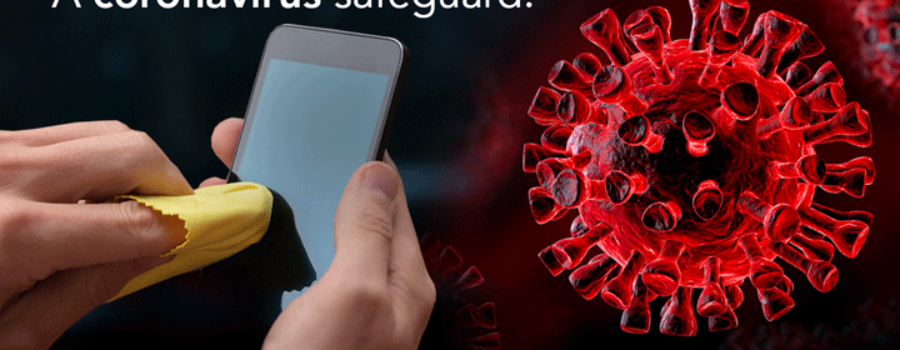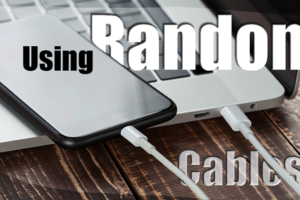Clean your phone
The next time you grab a friend’s smartphone to stare at a picture or to watch the video on YouTube they simply had to share, you might want to think again.
Or, even better, take a look at your own mobile device and wonder: when did I last clean it?
On January 17, ZDNet took to Twitter to ask a simple question: How often do you disinfect your phone? The results surprised us and certainly revealed a disturbing truth: the majority of us are filthy creatures.
In total, 18.5% of you said your smartphone was subject to a weekly clean, whereas 14% said their mobile device was subject to a monthly spruce-up.
A whopping 60% of you admitted you never cleaned your mobile device. 7.4% inferred you would clean it after you’ve been sick.
Our readers aren’t alone, either, in grim habits: a 2019 report (.PDF) of 1,200 US residents and their hygiene practices found that 88% of adults use their phones in the bathroom.
If you’re a parent, you are even more likely to do so with the figure climbing to 93%; perhaps in a bid to snatch a few minutes of peace to check social media feeds and emails.
(All in all, there are probably only two types of smartphone users: those who admit to using their device in the bathroom, and those who lie about it.)
Your smartphone goes everywhere with you. The lounge, the bathroom, the kitchen, the bedroom, the pub.
You touch the screen after you’ve washed up with the germ-infested kitchen sponge that really should have been thrown away days ago. You refill the dog bowl, perhaps receive an affectionate lick in gratitude and then accept a call, thereby pressing the screen to your face.
You unlock your phone in the pub garden to check a notification after you’ve used the restroom. (You’ve washed your hands but how many reprobates have you seen while you’re in there bypass the sink entirely to grab the door handle on their way out?)
It’s no wonder that smartphones are now comparable to toilet seats when it comes to the germs and viruses that claim them as home.
Initial suggests that the average smartphone has close to 10 times more bacteria per square inch than a toilet seat. In 2011, academics from the London School of Hygiene and Tropical Medicine found that roughly one in six devices harbor E. Coli, bacteria associated with fecal matter.
Another interesting piece of research, conducted by Insurance2Go, swabbed devices to show how much bacteria and yeast shows up after being incubated at 30C for 48 hours.

Other recent studies confirm high colony-forming units (CFU) per square inch levels on our mobile devices.
If you’re like me and travel often with a smartphone glued to your hip, you really might want to take a wipe with you. Outstripping everything else on the list, a study into airport self-check-in kiosks showed they contain a massive 253,857 CFU per square inch, thanks to our grubby hands.
We can’t get rid of our smartphones, despite the breeding grounds of germs they have become, and it’s important we don’t sterilize our lives to the point we hamper our own immune systems.
But it might be about time we think about cleaning our devices a little more often, especially in the winter season when cold and flu bugs are rampant and when touch can be enough to transfer contagious illnesses to our nearest and dearest. The now global challenge posed by the coronavirus is an additional wake-up call
How to do so properly, however, is something that confuses people who do not want to end up damaging these expensive items.
I asked people I knew how they cleaned their own smartphones. Tights, a scrub on their jeans, scarves and a spit-and-polish (yes, I know) were popular options — but we can do better than that. Below are some tips and for an in-depth review, you can also check out sister site CNET’s guide to keeping your mobile devices squeaky clean.
HOW TO CLEAN YOUR SMARTPHONE
- Microfiber cloth: To reduce the risk of scratching your screen, use a damp microfiber cloth rather than paper towels. The cloth won’t kill bacteria but will shift it away from your mobile device.
- Technology cleaners: There are specific cleaning products available for electronics and screens which will kill bugs and shouldn’t leave any streaks.
- Nooks and crannies: Use damp cotton swabs to clear up any awkward spots, such as headphone jacks or memory card slots.
- UV lights: For a serious clean, products including PhoneSoap will use UV to flash and kill microscopic bacteria.
- Antibacterial wipes: There’s no harm in using a wipe every so often, especially if you’ve recently suffered from illness, but this should be an occasional clean as they may contain harmful chemicals.
WHAT TO AVOID
- Window cleaning spray: You would be forgiven to think glass and window cleaners would be fine on a smartphone screen, but you would be wrong. Some displays have anti-oil and water protections, and using these chemicals can be too harsh, leading to gradual screen erosion.
- Paper: Paper towels can be abrasive enough to leave scratches on fragile smartphone screens.
- Rubbing alcohol/sprays: Alcohol is a go-to for cleaning but you may run the risk of damaging your device if you do so. Diluted or not, most vendors recommend that you stay away from this cleaning method.
- General household cleaning products: A spray that promises to kill 99 percent of bacteria is appealing, but the chemicals contained in household products can be far too harsh.
- Vinegar: Even when diluted with water, you are running the risk of stripping protective coatings from device screens.
It won’t kill you to miss a day or two of cleaning, but come on, everyone, never?
View all deals: Dirty iPhone? Here’s one flu and coronavirus safeguard: Clean your device now








